Key Points:
- The .350 Legend upper is a good choice for someone looking to fill the right niche.
- The ballistics are not that different from some other proven calibers.
- The cartridge may be a good option for hunting in states with straight-walled cartridge regulations.
- Subsonic .350 Legend cartridges can function well with a suppressor.
- The .350 Legend will likely stand the test of time.
- Beyond alternative calibers, buying a designated .350 bolt-action (or similar) rifle is an option over an upper receiver.
I’m not sure if anyone knows exactly how many different calibers have been adapted to ARs, but many are now adding a .350 Legend upper to their AR lower. For the shooter looking to expand AR calibers beyond the standard 5.56, does buying an .350 upper receiver make sense?
Safe to say there are dozens of different upper options out there, most of which center on the smaller AR-15 platform. One example, Remington’s .30 AR, was designed to offer .308 Winchester performance without the need for a larger AR-10 (the original “AR”). And there are other .30 caliber options beyond that!
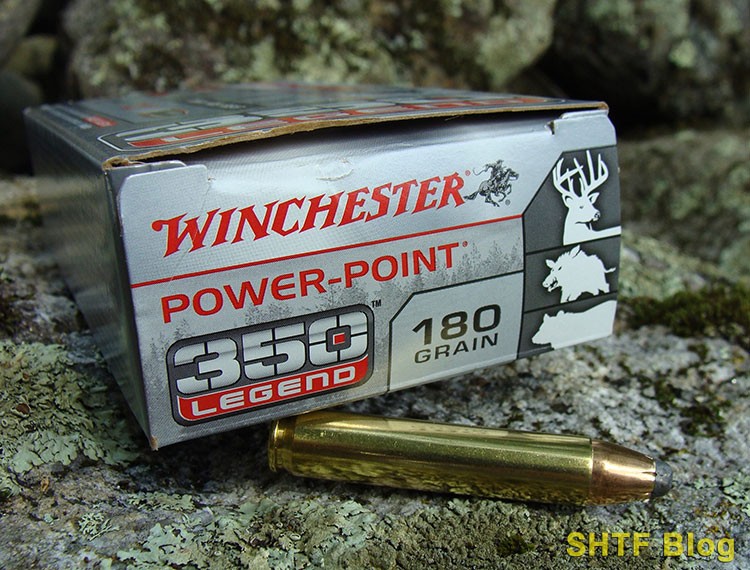
To Remington and others (including me), the idea of approximating its capabilities in the smaller AR-15 platform seemed brilliant. For most others, apparently not. Despite its introduction from a major firearms manufacturer and acceptance by the Sporting Arms & Ammunition Manufacturing Institute (SAAMI), the .30 AR quickly withered on the vine.
Is the .350 Cartridge Really Destined to Become Legendary?
Some other seemingly great cartridges languish simply because of limited marketing sources and their status as “wildcats.” One sitting on my desk is the .25-45 Sharps, which seems like a great idea with some deer hunting potential. Unlike the .30 AR, cartridge cases can be formed from .223 or 5.56 brass and an AR-15 conversion only requires a different barrel. These advantages will have a familiar ring to those who have converted to the .300 Blackout.
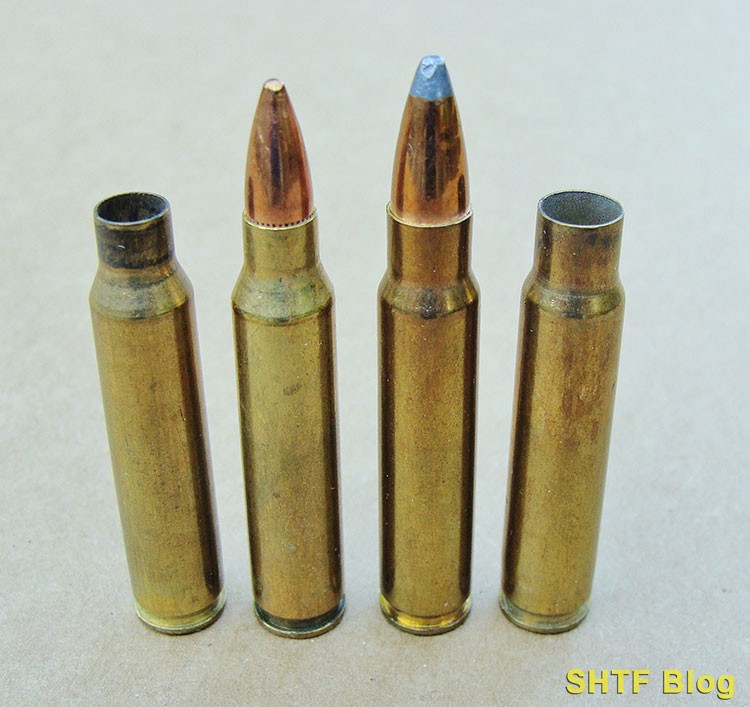
Although it lacked the initial marketing resources of the .30 AR and was also less powerful, the .300 BLK filled a niche by offering reliable subsonic AR-15 performance when paired with a suppressor. On top of that, it could approximate the power of the 7.62×39 Russian through a switch to supersonic loads. Those willing to take the plunge only needed a new .300 Blackout upper or barrel.
Ironically, much of the .300 Blackout’s current popularity is attributable to a Remington’s former subsidiary, AAC, which gave it new legs by rebranding the .300 Whisper. Acceptance by SAAMI and strong marketing quickly transformed the Whisper to a mainstream cartridge which was embraced by other major ammo makers. Meanwhile, most owners of ballistically superior .30 ARs are pretty much out of luck.
Which leads us to the .350 Legend. Will it indeed live up to its name or wind up as one of many “discontinued” cartridges? There are a few takeaways from the above examples which could make or break Winchester’s new cartridge. All of this could inform your decision on whether it’s wise to invest in a new .350 Legend upper.
.350 Legend Ballistics
The Midwestern U.S. is more than the nation’s breadbasket, it also produces lots of whitetail deer. But, until fairly recently, many of the hotspot states limited firearms to shotguns (or muzzleloaders). Eventually, some of them okayed use of straight-walled metallic cartridges within specified overall lengths such as the .357 Magnum, .44 Magnum, .45/70, and .444 Marlin.
As more states jumped on board, ARs began hitting the woods in qualifying straight-walled adaptations like the .450 Bushmaster. The latter certainly meets Ohio’s .357-caliber minimum, but it comes with a high cost and recoil. The door was open for a new but useful niche cartridge and Winchester seized the opportunity. They also took advantage of existing manufacturing capabilities, which lowered both production and consumer costs.
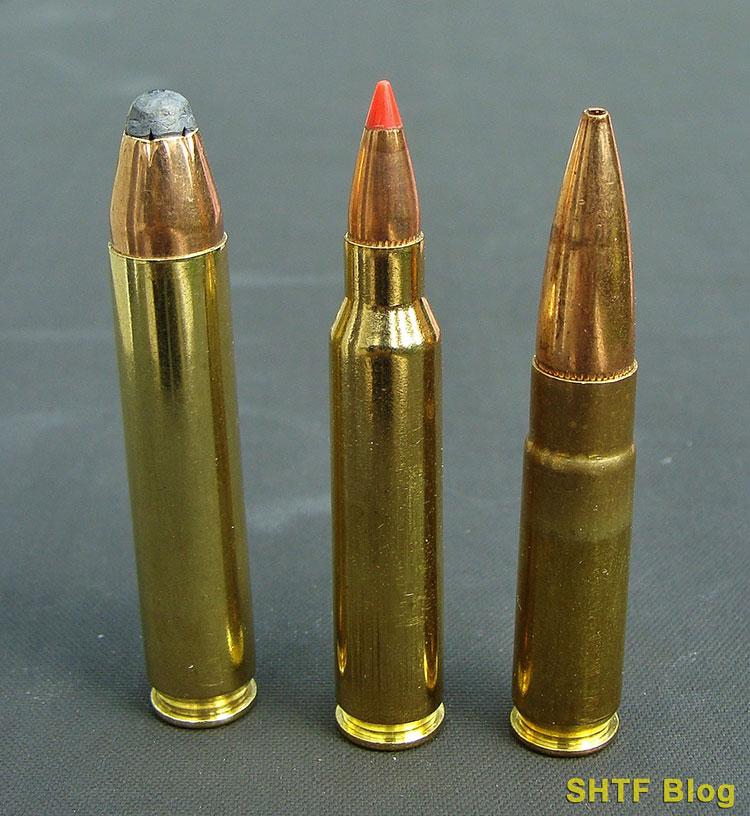
Dimensions
.350 Legend cartridge looks a lot like an un-necked .223 case with a .357-diameter bullet seated in its mouth. But, actually, its case dimensions are unique. Use of fired .223 brass is out for case-forming. The rim is the same as a .223 but the base-section ahead of it is fatter.
Conversion of an AR-15 thus only requires a new barrel, or just drop a complete .350 Legend upper receiver on your existing 5.56 lower to gain an interesting two-caliber system.
| Bullet Diameter | .3570-.0030″ (9.068-0.076 mm) |
| Neck Diameter | .378″ (9.6 mm) |
| Base Diameter | .390″ (9.9 mm) |
| Rim Diameter | .378″ (9.6 mm) |
| Rim Thickness | .045″ (1.1 mm) |
| Case Length | 1.71″ (43 mm) |
| Overall Length | 2.25″ (57 mm) |
| Case Capacity | 36.5 grains (water) |
This “rebated” design provides some taper for reliable feeding in semiautos. The casing is also longer. Since this cartridge lacks a shoulder, it headspaces on its mouth like many popular pistol calibers including the 9mm.
In fact, it uses similar bullets of .357-caliber, a benefit for many handloaders. But rather than go with blunt bullets common to .357 Magnum revolver cartridges, Winchester uses more aerodynamic projectiles. Many are heavier with increased tapers, which also improve feeding from magazines. Overall though, for anyone familiar with the .357 Maximum, the .350 Legend’s appearance will have similarities.
Of particular interest to AR owners, cartridge overall length (COL) is short enough to cycle through a standard AR-15, although modified magazines are required (through elimination of the internal ribs). The simplest fix is to buy some that were designed for this cartridge. The Legend’s case-rim shares the diameter of a .223/5.56, so standard bolts can be used for either cartridge. Pressures are also similar.
Ballistics
Winchester debuted the .350 Legend as “the fastest straight-walled hunting cartridge in the world.” They also hyped superior energy to cartridges like the .243 and .30/30, possibly by cherry-picking loads. Although this claim is debatable, the growing list of .350 Legend options should be fine for critters as large as black bears out to 175 yards or so.
| Bullet Mass/Type | Velocity | Energy |
|---|---|---|
| 160 gr (10 g) Federal Fusion | 2,300 ft/s (700m/s) | 1,879 ft.lbf (2,548 J) |
| 165 gr (11 g) Hornady FTX | 2,200 ft/s (670 m/s) | 1,773 ft.lbf (2,404 J) |
| 180 gr (12 g) Winchester | 2,100 ft/s (640 m/s) | 1,762 ft.lbf (2,380 J) |
Representative of the Legend’s performance, Winchester’s 150 and 180-grain loads are advertised with respective muzzle velocities of 2300 and 2100 feet-per-second (fps). If the latter, a 180 “Power-point”, is zeroed 2” high at 100 yards, it should be on the money at 175 yards.
At 200 yards it will impact around 6” low while producing 860 foot-pounds of energy – more than a 180-grain bullet generates at the muzzle from a 6” .357 Magnum.
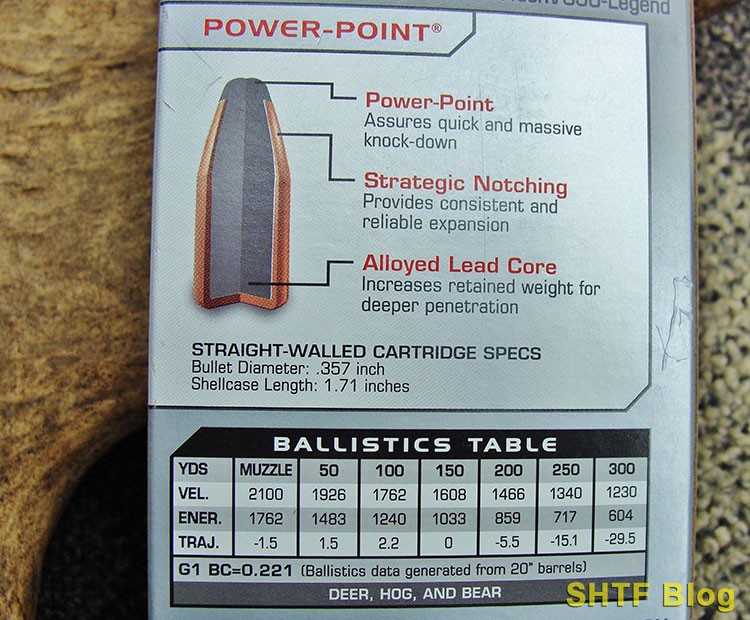
Lest we become too excited over these numbers, it’s worth noting the circa 1908 .35 Remington can match or beat the new Legend. Although loaded to less pressure, its larger and slightly necked case can achieve similar MVs using heavier 200-grain bullets.
It was also offered in a semiautomatic rifle – Remington’s Model 1908, which appeared in that year!
Today, the .35 Remington survives in Marlin lever-actions, due to its deserved reputation as an effective woods cartridge – for deer through black bear out to around 175 yards. Sound familiar?
Regarding accuracy, the new .350 appears to be capable of sub-2 M.O.A. groups, plenty-good for its intended purpose. You’ll see many reports of 100-yard groups closer to an inch.
Should You Buy a .350 Legend Upper?
A .350 Legend upper can sit on top of a standard 5.56 lower receiver, but is the upper (or just the barrel for that matter) worth the investment? Let’s see if our newcomer cartridge can check off some boxes related to its longevity.
There are plenty of places online where you can direct order a designated .350 Legend upper receivers and/or barrels. Following are a few suggestions. Check selection, pricing, and availability of each:

That assumes you have decided buying a .350 Legend upper or barrel is right for you, however. It may be, but let’s figure that out first, and explore possible alternatives.
Fills a Niche?
Legend sales will probably never be strong in Wyoming or other open spaces, but they should remain brisk in the Midwest as long as current straight-walled cartridge regulations remain in place. Elsewhere across America, because the AR-15 does indeed serve as a “modern sporting rifle,” a .350 Legend will offer increased thump for .223/5.56 owners. That’s enough for confident hunting of hogs, black bear, or deer within typical distances.
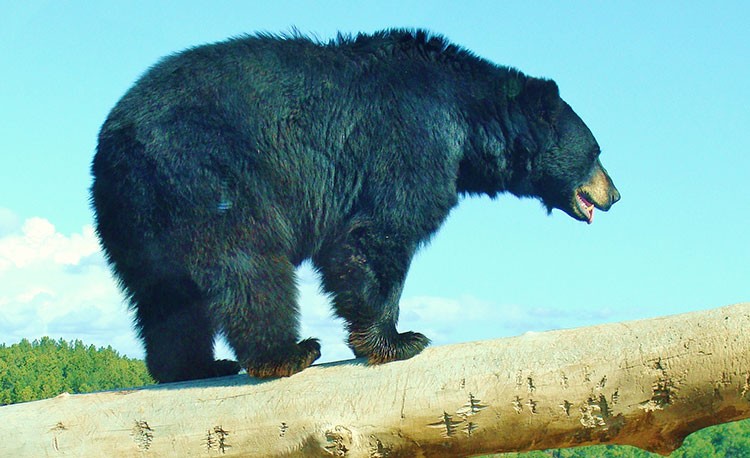
Further Versatility?
One interesting developmental reversal to the .300 Blackout is the Legend’s ala carte subsonic capability. A suppressor with a .35-caliber hole should be very quiet when paired with heavy, slow bullets like Winchester’s 350-grain Super-Suppressed. This load can develop enough pressure to cycle most AR-15s, and it seems perfect for nocturnal hog hunts over feeders. The supersonic loads have potential for fast-paced daytime action at longer ranges.
With less rifle-weight than say, a .30/06 Remington M-7400 semiauto but more terminal clout than a .300 Blackout, an AR-15 chambered for the .350 Legend could be just the ticket for deer drives. The system’s minimal recoil and semiauto function will support effective follow-up shots typical of this tactic. Young or small-statured deer hunters may benefit more from a small bolt-action or single-shot, which should still be manageable regarding recoil.
Long-Term Ammo Availability?
Circling back to Remington’s ill-fated .30 AR, the whole reason for its existence involved the AR-15. While that’s a significant part of the Legend’s development, the bigger picture is deer hunting. It’s no accident that Winchester unveiled a .350 Legend XPR bolt-action with the debut of the cartridge.
The average hunter is probably more interested in the cartridge than its compatibility with black rifles. Several other large ammo-makers apparently agree. Those now cataloging this caliber including Browning, Federal, Hornady (and probably, some others).
Lower Ammo Cost?
One pleasant surprise was Winchester’s initial .350 Legend pricing, a benefit of existing case and bullet-forming tooling. Of course, costs have since risen, typical of all ammunition. Using the .450 Bushmaster for comparison, a 20-round box of Winchester 250-grain Super-X sells for around $42 as of this writing.
A comparable box of Winchester’s 180-grain Super-X will cost around $30. That’s pretty much the going-rate for many other common hunting calibers, but further savings are possible through $20 FMJs which are good enough for range use.
Available Accessories?
The appearance of aftermarket products is always a good omen regarding longevity. The list of .350 Legend AR-15 upper-receivers, barrels, and magazines continues to grow. For all prospective buyers, caliber-specific scopes are even popping up.
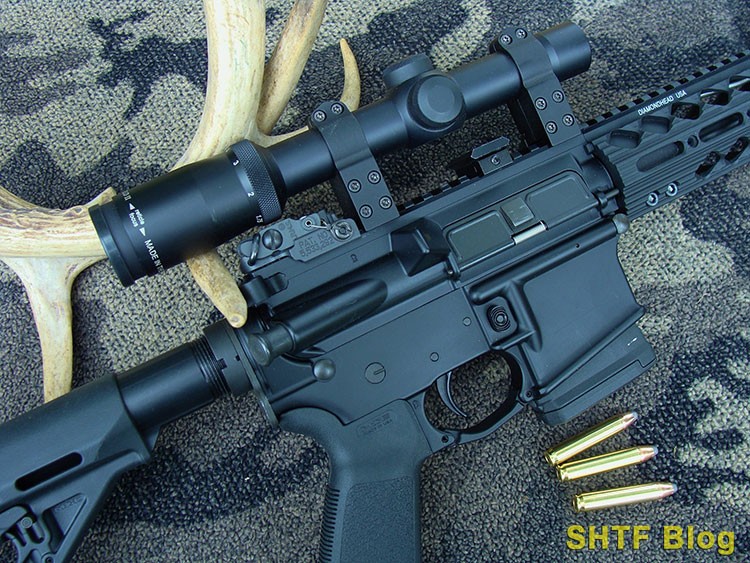
Reloader Friendly?
The Legend uses the same shell-holder and small rifle-primers as .223 or 5.56 NATO brass. Most component handgun bullets in .355 (9mm) through .357-caliber should work, and handloaders may already have suitable powders on hand such as H-110, etc.
Downsides of Buying a .350 Legend Upper
For reloaders, unlike the .300 Blackout, you can’t form .350 Legend cases from .223 brass. However, new cases are available from Hornady and Starline. The .358-diameter bullets intended for use in .35-caliber rifles (.35 Rem, .358 Win, .350 Rem Mag., etc.) may cause a bulge which will interfere with chambering (check out online remedies).
Proper case length and crimping are essential since the legend headspaces on its mouth. Regular case-trimming and a careful taper-crimp will be two necessary steps.
Concerns over the Legend’s survival could also slow sales, especially in those states without straight-wall restrictions. Based solely on range and power, there are certainly better picks through any of the mainstream bottlenecked big game cartridges from the .243 Winchester and upward.
Alternatives to a New Upper Receiver
As already mentioned, there are alternatives to buying a .350 Legend AR upper if you just want the benefit of the cartridge, namely buying a designated rifle like Winchester’s XPR bolt-action.
Beyond the growing list of AR-15s, a number of interesting bolt-actions have appeared. The above-mentioned Winchester .350 Legend has been joined by others from:
- CVA
- Franchi
- Mossberg (see here)
- Ruger (see here)
- Savage
- Howa (their scaled-down Mini-Action is the smallest and looks like an ideal host).
For the ultimate in simplicity, CVA and Henry now list this caliber among their single-shot rifle choices.
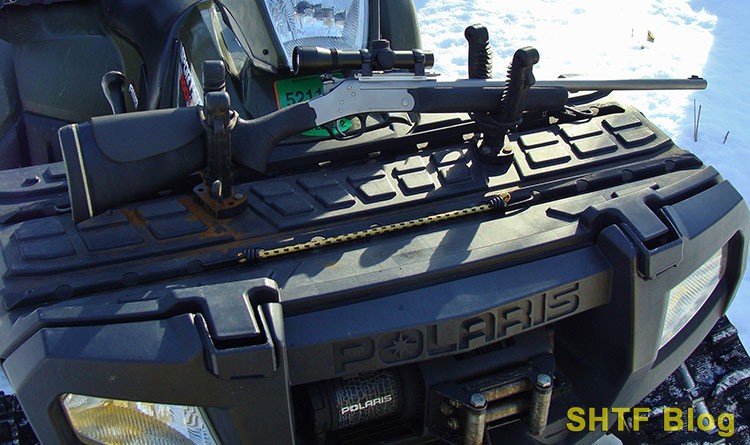
Meanwhile, a friend just ordered a custom .350 Legend rifle barrel for his break-barrel T/C single-shot Encore. Since he’s a handloader, a .357 Maximum might’ve been the better choice. The ballistics are similar and, being an extra-long version of the .357 Magnum, it’s rim would permit use of that caliber as well as .38 Specials.
I’ve owned several in the past but now just use a basic break-barrel Rossi .357 Magnum. Its 21-inch barrel can boost velocity by several hundred fps over a revolver – good enough for me. But for those in straight-walled cartridge states, it could reach the Legend’s level through a simple rechambering to .357 Maximum.
If interested in a conversion, Mike Bellm is the go-to .357 Max guru (with plenty of Legend knowhow). My buddy is well-aware of this. The reason for his new Legend? Well, mostly, its novelty. He’s probably not alone.
Final Thoughts
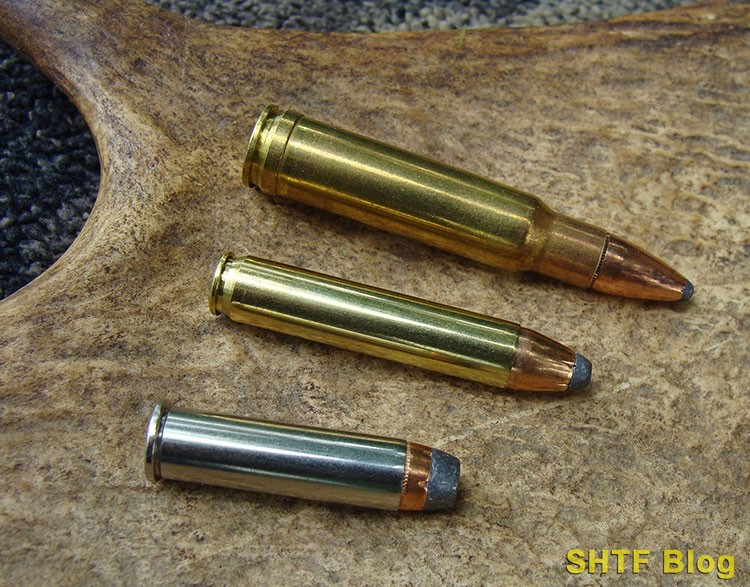
Although other .35-caliber rifles have been around for more than a century, none have been as popular in the USA as the various .30s (and lately 6.5s). The larger bolt-action .35s offer plenty of clout though. Because my state has no rifle restrictions, the several hunters in my circle own at least one .350 Remington Magnum, a caliber which can launch 200-grain bullets to nearly 2700 fps.
The longer .35 Whelen performs similarly, and the .358 Winchester comes close. Unlike the .350 Legend, these cartridges offer enough power to reliably take large moose. For those into mad science, they’ll also shoot handloaded .357-diameter handgun bullets well above 3000 fps for dramatic results on woodchucks or water jugs.
But, of course, the .350 Legend isn’t about raw power. It’s no varmint cartridge either. This cartridge exists to fill a niche, and possibly, a few ancillary roles which might even involve a suppressor. For those limited to straight-walled cartridges, it hits the ballistic Goldilocks zone; not too big, not too small, with tolerable recoil and modest cost.
Suitability for the AR-15 helps, but the Legend’s attributes alone may ensure its continued success. I’ll stick with the .300 Blackout for suppressed subsonic requirements, but a handy .350 Legend AR-15 Carbine seems like just the ticket for an occasional late-season deer drive.
3 comments
i will be starting my ar build of a 350 legend soon. I am very interested in this caliber and your info has been very informative. thank you for your help. Apeman!
I had been on the hunt for a 357 mag single shot H&R to convert to 357 Max, for my daughters to hunt with.
Heard about the 350 L and the numbers mimiced the Max’s ballistics. Was pretty excited since it was ammo a new barrel swap and get sighted in for deer season. The initial mag and feeding issues though, made me avoid early adoption.
I still think about setting up a 350L upper. And ammo availability during these last two years plays a role there.
Stumbled across this archers while browsing decided to input. Living in Ohio I was very excited to hear of a new smaller and more affordable round for deer! The .40 cal series of rifle offered too much power for my liking, destroying bones and creating useless meat does coincide with filling my freezer. I purchased a 350L bolt action and loved it so much I decided to start an AR build (just for the fact I like a quick follow up shot when needed) and I can build an AR 350L cheaper than I can buy a rifle with open sights.